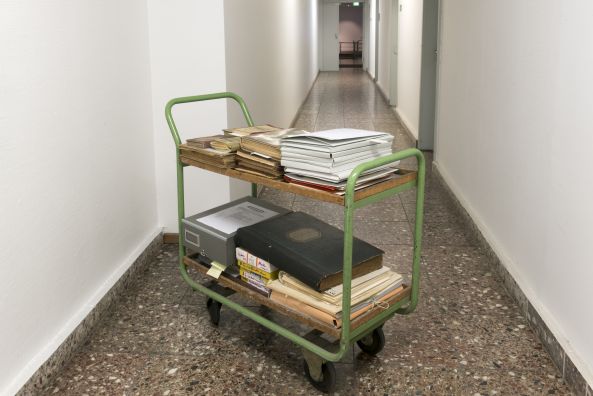The documentation of theatre performances in the GDR began in 1966 and was collected up until the fall of the regime, and it also thus captured the transformational processes of 1989, 1990, and after. The documentation was initially commissioned by the Academy of Arts in East Berlin and the GDR Union of Theatre Producers; starting in the 1970s, it was managed by the Theatre Union. From the almost 1500 performances held during a staging session in GDR theatres, only documentation of 40 to 50 were selected to be included in this collection. Among the criteria which guided the selection processes, one can note the novelty of the performances, the premiere of prominent GDR screenwriters, the documentation of directors who introduce new methodologies, or up-and-coming theatre professionals.
The material collected varies from one play to another; however, there are specific structures which have been followed by each documentation. Namely, the sequence within the performance production had to be comprehensible, so as to cover the preparation process, the rehearsals, the performance itself, and its reception by the audience. Each play documentation had to also include theatre publications, including programme leaflets, posters, promotional material, etc.
Thus the forms and media types of documented material are manifold. They include analyses, conceptual paperwork, secondary literature, historic images, translations from foreign literature, minutes from meetings, stage design, masques and costume sketches, rehearsal notes, scripts, production books, photographic documentation, and performance reviews among others.
The section for performing arts of the Academy of Arts' Archive in Berlin carried out this pioneering project and expanded the documentation of theatre productions to include documents from throughout Germany and to include other German-speaking countries. The German Theatre in Berlin, for instance, has been a long supporter of the project and has documented 110 performances thus far. In total, the collection has documented 1,000 performances by 350 directors in 120 theatres.
Following the events of 1989, the material has drawn attention from foreign scholars and researchers in particular, interested not only in the political changes but also changes in the theatres landscape of the GDR. Currently, the material can be accessed for academic activities, exhibitions, or research.

